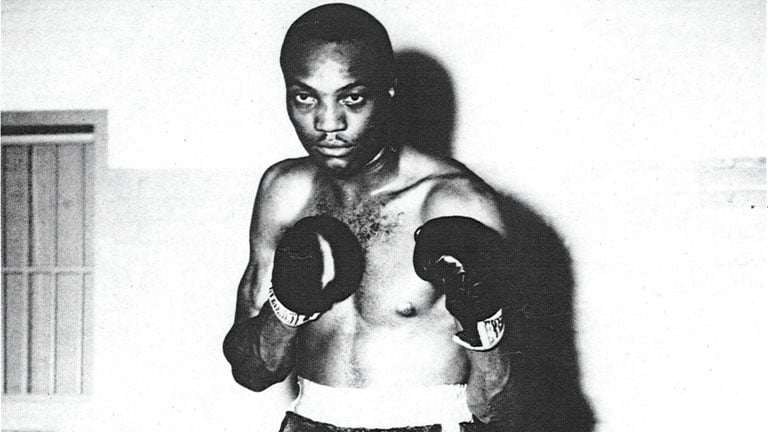By Jamie Rebner
ALTHOUGH Bob Foster is undoubtedly considered one of the greatest light-heavyweight champions of all time, he wasn’t a household name during his prime years. His championship reign lasted from 1968 to 1974 and included 14 successful title defenses. Yet Foster is best known for his two crushing defeats at the hands of heavyweight kingpins Joe Frazier and Muhammad Ali.
One of the reasons why Foster didn’t achieve mainstream fame as champion is because the era of light-heavyweights he ruled over featured few recognizable names. Clearly, Andy Kendall, Roger Rouse, Mark Tessman, and Ray Anderson are anything but a murderer’s row of contenders.
Had Foster’s career started a bit later, his peak would have coincided with a golden age of the light-heavyweight division that took place from 1976-1983. Those years featured countless wars of attrition waged by the likes of Victor Galindez, Matthew Saad Muhammad, Michael Spinks, Dwight Muhammad Qawi, and Marvin Johnson, to name a few.
Unfortunately for Foster, he missed out on that era, and despite his light-heavyweight dominance, he wasn’t a major box-office draw. That is why it was surprising to see how much attention he received ahead of his 13th title defense against homegrown favorite Pierre Fourie in Johannesburg, South Africa.
That bout took place on December 1, 1973, at the Rand Stadium in front of a segregated crowd of 40,000 people. It was historic because it was the first fight between Black and white fighters in South Africa in almost twenty years. Although fights between Black and white competitors are ubiquitous today, they were outlawed in South Africa starting in 1954 as part of Regulation 15 of the Boxing Control Act.
That law was part of a greater social system of apartheid, or ‘apartness’ in Afrikaans, which, according to South African History Online, was a system of institutionalized racial oppression that was introduced in South Africa in 1948. Apartheid was a social system supported by the National Party government, which “severely disadvantaged the majority of the population, simply because they did not share the skin colour of the rulers. Many were kept just above destitution because they were ‘non-white’.”
Although segregation existed before the National Party came to power, apartheid cemented segregation as part of the law.
So, how did Foster-Fourie II come to be?
To answer that question, we have to travel back four months before the monumental clash in South Africa, when Foster and Fourie battled for the first time in Foster’s hometown of Albuquerque.
South African middle and light heavyweight boxer Pierre Fourie, on left, pictured at Heathrow Airport in London on 10th August 1973. (Photo by Gerrard/Daily Express/Hulton Archive/Getty Images)
